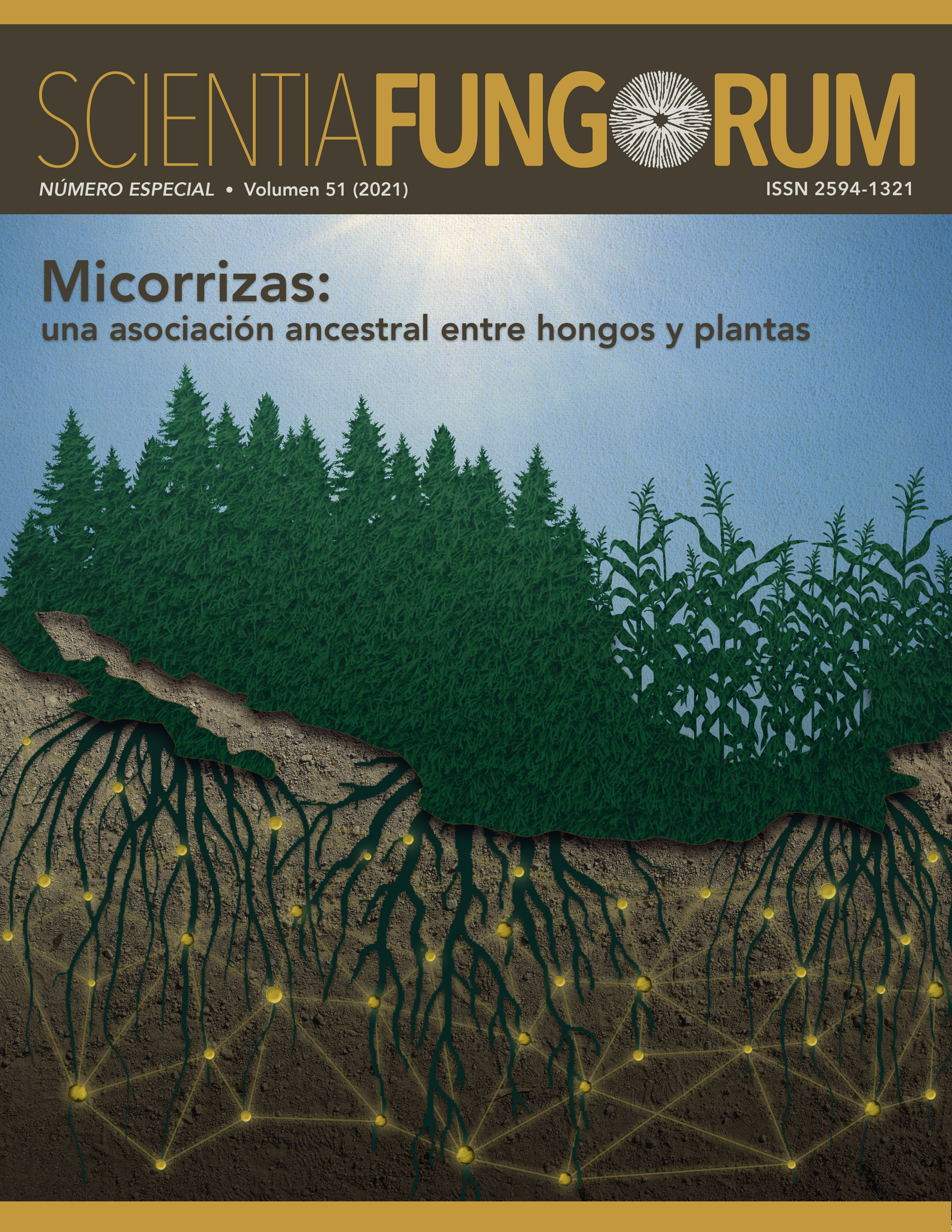Evaluation of environmental heterogeneity and its effect on arbuscular mycorrhizal interaction in coastal dunes
DOI:
https://doi.org/10.33885/sf.2021.51.1371Abstract
Background: Coastal dune scrub vegetation is established on a substrate that favors biodiversity, but this is currently restricted to small patches.
Objective: To determine the status of the arbuscular mycorrhizal fungi (AMF) in this vegetation under different anthropogenic pressures and to propose actions addressing its conservation and restoration.
Methods: Plant and fungal community was characterized through taxonomic identification of the AMF and determination of their percentage of viability, number of infective propagules (NIP) and percentage of mycorrhizal colonization. Three contrasting sites were identified in the Ría Lagartos Biosphere Reserve: C = Conserved, IPS = Intermediate perturbation by the salt industry and HPA = high perturbation of anthropogenic origin. In each site, fine roots were collected from 12 common species and compound soil samples were taken.
Results and conclusions: Eight AMF species were identified, in IPS, the highest values were presented in terms of percentage of colonization 55.43 ± 6.5, NIP = 142.07 ± 91.2 and viability = 27.6 ± 15.21 % while, in HPA, a higher number of healthy spores were found 43.6 ± 11.5/50 g. Infective propagules are an indicator of a “healthy ecosystem” and were found at a higher proportion in the conserved site.
Downloads
Downloads
Published
How to Cite
Issue
Section
License
Copyright notice
Open access policy
The authors who publish in this journal accept the following conditions:
In accordance with copyright laws, Scientia Fungorum recognizes and respects the authors’ moral rights, as well as the ownership of property rights, which will be transferred to the journal for dissemination in open access. Scientia Fungorum does not charge for submission and processing of articles for publication.
All the texts published by Scientia Fungorum –with no exception– are distributed under a Creative Commons License Attribution-NonCommercial-ShareAlike 4.0 International (CC BY-NC-SA 4.0), which allows third parties to use the publication as long as the work’s authorship and its first publication in this journal are mentioned.
The authors can enter into independent and additional contractual agreements for the nonexclusive distribution of the version of the article published in Scientia Fungorum (for example include it into an institutional repository or publish it in a book) as long as it is clearly and explicitly indicated that the work was published for the first time in Scientia Fungorum.
For all the above, the authors shall send the form of Letter-transfer of Property Rights for the first publication duly filled in and signed by the author(s). This form must be sent as a complementary file.
This work is licensed under a Creative Commons Attribution-NonCommercial-ShareAlike 4.0 International license (CC-By-NC-SA 4.0).



